Colin McCrate's Blog, page 4
March 30, 2023
SUFCo x Bale Breaker Brewing Homegrown Spring Farmstand - April 30th, 2023

To celebrate Spring the team from Bale Breaker’s Yakima farm is bringing 6′ hop plants sell at our their Ballard Taproom. We’ll be here selling our new Freyr trellis, our friends at Beyond Peat Professional Organics will have some of their latest soil to sample, and Ecolibrium Farms will also be in house selling plant and flower starts for the spring season!
Come by and try Bale Breaker’s new Homegrown Spring IPA and take home some hops, spring planting starts, and a Freyr trellis of your own! Excited to see you all there!
When: Sunday, April 30 12pm - 4pm
Where: The Bale Breaker x Yonder Taproom located at 826 NW 49th St Seattle, WA
We will be demoing our Freyr trellis and accessories, which will also be available to purchase on site. If you’ve been looking for a chance to see the trellis in person, this is it! We’ll have a limited number of trellises for sale at the the event. If know you want to order a trellis, but would like to opportunity to save on shipping fees and pickup in person, pre-order before Wednesday 4/26 to guarantee we’ll have the color and number of trellises and accessories you want. When checking out just choose “I’ll pick it up myself” and select the Ecolibrium Farm Plant sale so we know where to bring your order!
SUFCo x Bale Breaker Brewing Spring Gardening Event - April 30th, 2023

Details to come soon!
March 14, 2023
Fun Freyr trellis feature from the Northwest Flower and Garden Show!
Crop Planning - An excerpt from "Food Grown Right, In Your Backyard"
There are plenty of ideas out there about how best to organize your crops. Some people believe that different plants should be mixed together so as to discourage pests or create visually interesting garden scenes. Since there are virtually infinite crop combinations, it is impossible to give a set of exact rules for planting. But in this chapter from our book “Food Grown Right, In Your Backyard”, we share some general guidelines that should make garden planning easier.




For more on crop planning, check out these useful articles from our archives:
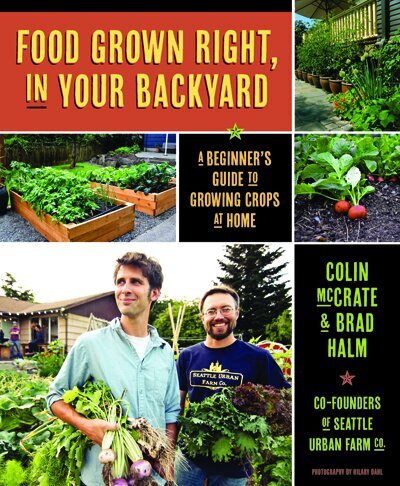
The essential handbook for beginning home gardeners.
Combining our knowledge of small-scale organic food production, environmental education and residential landscaping, we have created a thorough, easy-to-use guide for backyard farmers
Order “Food Grown Right, In Your Backyard”January 11, 2023
Grow lights for plant propagation - A few short videos

In indoor and partially shaded spaces, there is rarely enough natural light to keep your propagation area in business. Supplemental lighting will ensure that your seedlings grow quickly and stay healthy. Light-stressed plants will develop thin, weak, “leggy” stems and will be more susceptible to pest and disease attacks and, ultimately, poor productivity. Setting up a working grow light doesn’t require an electrician’s license and doesn’t have to cost an arm and a leg, but high-tech options are available for those who love their lumens.
The following is a short video series on the subject:
View this post on InstagramA post shared by Seattle Urban Farm Co | Garden Creators (@seattleurbanfarmco)
View this post on InstagramA post shared by Seattle Urban Farm Co | Garden Creators (@seattleurbanfarmco)
View this post on InstagramLearn more about setting up your home nursery in our book, “Grow More Food”A post shared by Seattle Urban Farm Co | Garden Creators (@seattleurbanfarmco)
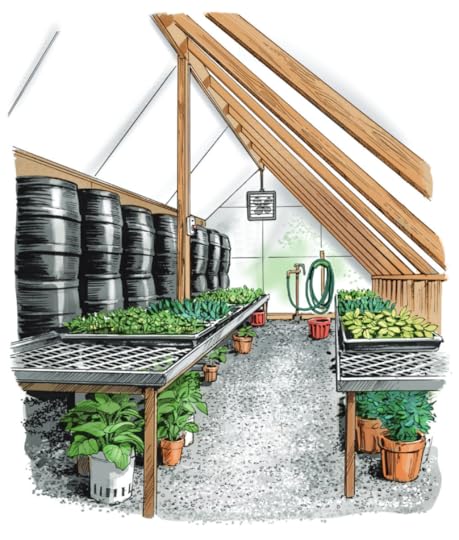
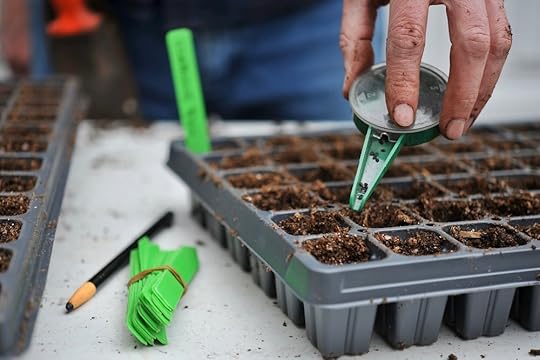
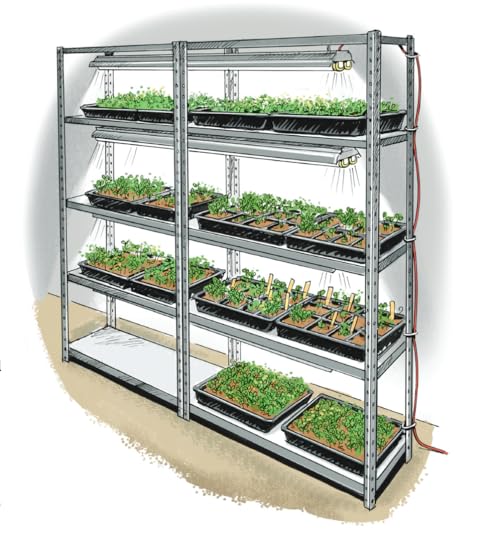
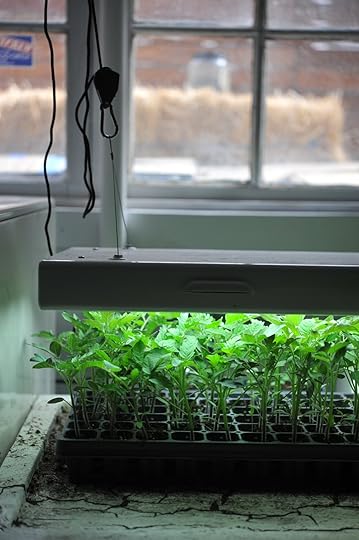

December 17, 2022
Sustainability first, our environmental philosophy
 Sustainability first, our environmental philosophy
Sustainability first, our environmental philosophyThe combination of the holiday shopping season and the global climate talks makes this a great opportunity to be intentional and make decisions we can feel good about. As a business, we’re committed to providing garden services and products that are good for people and for the planet.
This philosophy has never been more important than over the past year as we designed and developed our new Freyr trellis. Creating any product has inherent environmental consequences. Knowing this, our goal has been to provide a product that is the best option available: aesthetically, functionally, and environmentally. To make sure our trellis is a sustainable product, we focused on a few key ideas:
Durability: Instead of making a short-lived product that needs to be replaced every few seasons, we wanted to make a product that could last for decades. The goal is that the Freyr trellises you buy are the last trellises you ever need.
Compostability: The twines and trellis clips that accessorize our trellis are all compostable. We hate to see plant debris tossed into the landfill just because it’s intertwined with the plastic and nylon trellising materials often available at garden stores.
Recyclability: Our trellises are made from powder-coated aluminum and, should you ever decide you’re finished gardening (and don’t want to pass along the trellis to another grower), it can be recycled.
Carbon-neutrality: We’re still working on mitigating our carbon footprint for the product. It’s been tricky to fully know our impact while the product is so new. Our plan is to offset all carbon associated with the manufacturing and distribution of your trellis, and ideally more, so that we can proudly sell a carbon-negative product. One that offsets more carbon that it produces. We’ll keep you posted as we solve this problem in its entirety, but please know that we are in the process of figuring this out.
We love you!
Hilary and Colin
November 7, 2022
Working with the Freyr trellis
We’ve had so much fun creating and testing the new Freyr trellis in our garden, and we’re so excited to get yours out the door and into your hands. Here’s a one minute video of us working with a few of our trellis to help inspire you to grow a garden you love!
-Hilary and Colin
Quality compost for the home garden

Humus — what’s created when soil microorganisms break down raw organic matter — is an essential component for good garden soil. It acts as a “glue” to hold soil aggregates together and creates what growers call “tilth” (good soil structure). Humus gives garden soil a wonderful loose crumbly feeling, and it doesn’t completely collapse into individual particles when you work it.
Humus also acts like a sponge in your soil; it helps maintain proper moisture levels. In soil without humus, water will either leach away too quickly for plants to use (very sandy soil), or will make the soil waterlogged and difficult to work for long periods (very clay-rich soils). Humus-rich soil will take up water and hold it right where your crops can use it. As humus continues to break down, it releases nutrients that your crops can use to grow. Amazing stuff, that humus.
Humus breaks down, so its presence can only be maintained by adding organic matter to the garden on a regular basis. The easiest and fastest way to do this is to add compost. Because compost is already partially decomposed, it’s easily converted into humus. Also, the nutrients in compost have been stabilized, so they’re less likely to leach from the soil than from raw organic matter. Good compost also contains beneficial microorganisms, helping to keep the biotic community of your soil in good health.
It’s important to note, however, that not all compost is created equal. You might hear a recommendation such as “add X amount of compost to your garden each year, and you’ll be able to grow wonderful vegetables without adding any other fertilizers.” This might be true in climates with warm growing seasons and the highest quality compost, but does not hold true in every situation.
For example, compost made with horse manure will supply a different amount of nutrients than compost made with chicken manure, or compost made from plant material. Finished compost will begin to supply nutrients quickly, but compost that’s still breaking down may actually tie up nitrogen for a period of time because the soil bacteria are using it to process the organic matter.
Making your own compost can be a great way to ensure a high quality product, but is something we see many growers struggle with, especially in urban environments. If you don’t have access to quality feedstocks for your compost and a way to transport them (i.e. a truck), it can be difficult to build a top-notch pile. If this is the case for you, don’t worry. There’s nothing wrong with buying compost. Even if it’s only moderate quality, you can still have a great garden if you use organic fertilizers and soil amendments appropriately. And if your compost ends up being subpar, you can always try a different compost supplier next season.
Ideally you’ll be able to find a locally-made product made specifically for vegetable gardens. Avoid compost that is sold for use on ornamental beds as it’s likely to contain lots of high-carbon materials, like undecomposed wood and bark, which can reduce the availability of nutrients for your plants.
Obviously, a certified organic product will help ensure quality ingredients, but well-made compost does not need a certification to be a great product. Talk to the provider and learn how the product is made and what it is made from before loading it up.
Generally speaking, compost made with animal manure will provide more usable nitrogen, phosphorus, and potassium. Compost made strictly with plant waste is still a great source of organic matter, but will yield less of these nutrients. Here are a few additional items to consider when purchasing compost.

Wood Isn’t Good
Any compost made with large quantities of wood chips or sawdust is not suitable for vegetable production. In the short term, composts or other soil amendments that contain high levels of carbon — such as wood chips, bark or sawdust —will actually decrease nutrient availability in the soil. (It can be great for mulching around trees and perennials however.) Many landscaping companies and nurseries carry compost made with woody materials; make sure you don’t get the wrong product if you’re buying from these sources. These materials may be labeled as compost, but are more accurately described as mulch. The first year we ran our business, we unknowingly built all of our gardens using purchased compost with a lot of sawdust in it. Every crop in every garden grew poorly until we tested the compost and found out what was happening- no nitrogen!
Not Hot
Compost that is hot, steaming, or has a strong smell is probably not fully finished and could “burn” (either physically or with too many nutrients) plants. Fully finished compost will have any earthy, “soil-like” smell and feel. If you happen to buy unfinished compost, you can pile it up and turn it a few times until it breaks down and cools off. It’s also okay to add directly to the garden, but you’ll want to wait at least a few weeks to plant into these areas. We like adding compost to the garden in the fall to make sure it’s fully broken down before we begin planting in the spring.
This post is an excerpt from our latest book, Grow More Food :
 Grow More Food: A Vegetable Gardener's Guide to Getting the Biggest Harvest Possible from a Space of Any Size By McCrate, Colin, Halm, Brad
Grow More Food: A Vegetable Gardener's Guide to Getting the Biggest Harvest Possible from a Space of Any Size By McCrate, Colin, Halm, Brad
October 20, 2022
Green Tomatoes
 Green tomatoes
Green tomatoesEven with an extended fall harvest season like we had this year, you're inevitably going to end up with some unripe fruit on the vine. This can happen to a lot of crops, but tomatoes are the most common culprit. Fortunately, there are a few simple techniques to help ripen up fruits at the end of the season.
1. Root pruning: one key strategy to force plants to ripen fruit is by stressing it out. If a plant becomes stressed, it jumps into action, trying to mature any remaining fruits in the hope of creating viable seeds before its demise. Start by turning off the irrigation to your tomatoes (if that's possible) and then prune the roots of the plants, to give them an extra shock. The process is simple, just take a spade shovel and cut a line around the plant (or across the edge of a row) about 12" from the stem. This will sever a large portion of the root system, stressing out your plants and compelling them to put their remaining energy into fruit ripening.

2. Hard pruning: get your plants to put energy into fruit ripening by preventing them from trying to set new fruit. It's too late in the season to set and mature new fruit, but your tomatoes might not realize that. So cut off any new shoots from your plants, especially those that have new flower blossoms. You can also cut off most of the leaves from your plant to help get a bit more sun and air exposure to your existing fruits. This can help both prevent rot and speed up the ripening process.
3. Pick and wait: If rain is imminent or your plants are succumbing to pest or disease issues, consider harvesting all the unripe fruit now. Most of these fruit should still ripen off the plant. All you need to do is place them out on a counter or windowsill and wait. Make sure each fruit has space, no stacking. If your fruits are too close together or set in a pile, they're likely to rot. If you have space to lay them each out individually, you'll see them slowly ripen up over the next several weeks. Check them regularly and toss any that begin to mold or rot. The rest should ripen up and be almost as good as those finished on the vine.
October 6, 2022
Saving your flower seeds

Scabiosa seed collected from a seed head that dried out on the plant.
Saving your flower seedsSeed saving is the art of collecting the seed from your crop and using it in subsequent seasons to grow new plants. Even if you save only small quantities of a few crops, understanding more about the life cycle, breeding tendencies, and botany of your crops will help you manage and care for them more effectively.
Only open-pollinated crops will produce seed that is viable and that breeds true to itself. “Breeding true” means that the plants grown from your collected seed will produce a crop with similar traits (growth habit, disease resistance, taste, etc.) to the parent plant. Even with open-pollinated crops, you’ll get the best results if you know a little bit about their genetics and how to separate flowering crops by time and distance in the garden.
Seed saving strategies are specific to the species you’re working with, so if you plan to delve deep into the world of seed saving and breeding, we highly recommend picking up a few of the books on the subject.
If you want to ease your way into seed saving, some of the simplest crops to save are annual flowers. For the casual flower farmer, collecting seed from annual garden flowers can be very easy and satisfying: Calendula, marigolds, nigella, poppies, scabiosa, sunflower, strawflower, sweet peas and zinnias all produce high yields of seeds with virtually no additional effort except to collect the seed pods when they've dried but before they open and drop their bounty.
A note on saving sunflower seeds
Most varieties of sunflowers are hybrids, as opposed to open-pollinated. The saved seeds from a hybrid plant will be viable, but the offspring will exhibit different qualities than its parent plant. For example, if you grew a hybrid sunflower variety that was compact with pale yellow petals, some of the offspring may be similar, but it's more likely that its offspring will grow into all sizes and colors. Saving seed from a hybrid can be a fun experiment…but you can’t predict what you’ll get!
Storing your saved seeds
We like to store our saved seed in paper envelopes- nothing fancy! Just be sure to store your saved seeds in a cool, dry place. Label your seed envelopes with the plant name, variety, and the year it was collected.
Photos clockwise from top left:
Scabiosa seed heads, ready to harvest; Calendula seeds harvested off of the dried seed head; Strawflower seed head with seeds loosened; Zinnia seeds can be harvested before the heads have dried out completely.




We like to store our saved seed in mini envelopes like these:
 Books on seed saving that we recommend:
Books on seed saving that we recommend:  Seed to Seed: Seed Saving and Growing Techniques for Vegetable Gardeners, 2nd Edition
Seed to Seed: Seed Saving and Growing Techniques for Vegetable Gardeners, 2nd Edition  The Seed Garden: The Art and Practice of Seed Saving
The Seed Garden: The Art and Practice of Seed Saving  Grow More Food: A Vegetable Gardener's Guide to Getting the Biggest Harvest Possible from a Space of Any Size By McCrate, Colin, Halm, Brad
Grow More Food: A Vegetable Gardener's Guide to Getting the Biggest Harvest Possible from a Space of Any Size By McCrate, Colin, Halm, Brad



